27 Jan 2014
How to Avoid Substituting Your Addiction
A substitute addiction is a substance, activity or behavior that replaces a previous addiction. Acquiring a substitute addiction is not uncommon for those in recovery from drug or alcohol dependence. Being an addict takes up the biggest portion of your life.
When you are addicted to drugs or alcohol, you obsess over getting more, you earn money just so you can buy more, you try to hide your habit, and you fight with loved ones about it. In other words, addiction takes over your life. When it is gone, it may feel like you have a void in your life that needs filling. It is possible to fill that hole with positive activities and healthy relationships, but if you’re not careful, you may just slip into another addiction.
Are Substitute Addictions Always Bad?
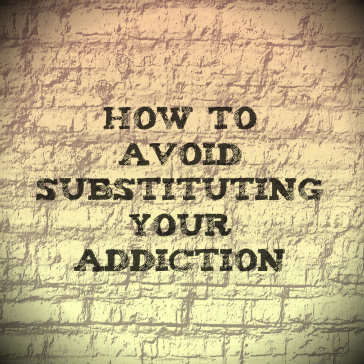 For some addicts in recovery, a substitute addiction may start out as a healthy new activity. Maybe you have taken up an exercise regimen, or you have started going to church again. Perhaps you are ready to devote yourself to your job and to getting a promotion. None of these are bad ideas, but they can become unhealthy obsessions and even approach the level of a behavioral addiction if you do not monitor your behaviors.
For some addicts in recovery, a substitute addiction may start out as a healthy new activity. Maybe you have taken up an exercise regimen, or you have started going to church again. Perhaps you are ready to devote yourself to your job and to getting a promotion. None of these are bad ideas, but they can become unhealthy obsessions and even approach the level of a behavioral addiction if you do not monitor your behaviors.
Not all addicts will develop these substitute addictions, but it is possible. There are underlying reasons you became an addict in the first place. These reasons may cause you to take up a new obsession when the first one has gone away. It is important that you find new ways to expend your energy after getting sober, but be aware of the possibility of a substitute addiction and remember that moderation is key.
How Can You Recognize A Substitute Addiction?
Because many of these substitute addictions start out as a healthy and positive new activity, it can be tough to tell when you are approaching a level of unhealthy obsession. If you became clean from prescription drugs, and then turn to drinking alcohol, the presence of a substitute addiction is obvious. Becoming obsessed with exercise or work is less so.
Listen to your loved ones and your support network. If people who care about you are telling you that you are becoming obsessed with your new hobby, you should listen. It is often easier to recognize a substitute addiction in someone else than it is to see it in yourself.
Be aware of your feelings and your motivations. If you went through a good rehab program, you learned to be aware of why you became an addict and how addiction changed your emotions and moods. If you notice similar feelings and motivations in your new hobbies or activities, it’s time to rethink what you’re doing.
How To Strike A Balance In Sobriety
Just because substitute addictions are a possibility in your new, sober life does not mean that you should not get involved in new activities. To avoid obsessing or developing a replacement for your addiction, learn to be more balanced. Instead of getting heavily involved in one activity, try several. Spread yourself out and try a lot of new things. You can always whittle your new activities down to two or three, but don’t allow all of your time to be taken up by just one.
Make sure your new activities don’t get in the way of the responsibilities you have. Make sure you keep time set aside for your relationships, your chores, and anything else you need to do. Let your loved ones help you through this process. With their support you can learn to be balanced and healthy while staying free of any kind of addiction.
Who recognizes that they are enabling? Who enables so intentionally? And yet, if we have addicts in our lives, we must look carefully at how we interact with them. How do we handle a loved one with an addiction? The years of dealing with the addiction of a loved one blind us to our own actions and their consequences. Much of what we think is “helping” can actually be quite harmful.
Signs You Are Enabling
- Do you make excuses for the addict (e.g., lying to an employer to explain why the addict isn’t showing up for work)?
- Do you lie or deceive to protect the addict or your family’s image?
- Do you intentionally overlook bad behavior, saying that the addict “can’t help it?”
- Do you feel like you bear the brunt of consequences for the addict’s behavior?
- Do you continue to allow an addict son or daughter to live in your home despite substance abuse and his or her unwillingness to follow house rules?
- Do you loan or give money to the addict?
- Have you bailed the addict out of jail, or lied to protect him or her from getting in trouble with the law?
- Do you clean up the resulting mess? This can refer to the physical mess the addict makes during or after a binge as well as the messes he or she is making in life.
- Do you make his or her problems your responsibility?
- Are you trying to protect the addict from hitting bottom?
- Do you experience anxiety over the consequences the addict may experience as a result of his or her substance abuse?
- Do you excuse or overlook the addict’s words or actions when drunk or high?
- Do you feel guilty if you don’t help the addict?
- Do you do things for the addict that he or she can do for him or herself?
- Are you unable to say “no” to the addict?
- Do you live in fear of the addict?
- Are you constantly changing your plans to accommodate the addict’s antics, dramas and needs?
How Enabling Hurts Rather Than Helps The Addict
Enabling does not help or aid, rather it communicates the message that the addict’s actions have no consequences, or that if they do, someone (you) will be there to fix it, clean it up or excuse it away. If you are beginning to recognize enabling patterns in your relationship with the addict, know that it is not your fault. Life with a drug or alcohol addicted parent, spouse or child warps us. We are forced to find a means of coping with a situation that gradually grows more and more severe over time. In the beginning, a little helping isn’t an abnormal thing, but this helping subtly morphs, along with the addiction, into a full-blown condition.
What Can You Do Instead Of Enabling The Addict In Your Life?
What is the alternative? Letting go. And it will be painful to do. You may watch the addict lose jobs, get into trouble with the law, live in squalor, sink into poverty, and suffer all sorts of physical, mental and emotional discomforts. It will be as hard on you to watch as it will be for the addict to live through. You will want so badly to do something.
But when you do, you impede the addict from reaching that point at which he or she will become convinced of the need for a change, also known as “hitting bottom.” The longer you enable the addict and the addiction, the longer it will take the addict to pursue recovery. Get the support you need—either through Al-Anon, therapy or other support systems—and then call a halt to the cycle of enabling and addiction.
Learn How To Set Up A Safe Intervention For Your Addicted Loved One!
13 Dec 2013
Why Has There Been A Sharp Increase In PCP Use?
The Substance Abuse and Mental Health Services Administration (SAMHSA) produces regular reports based on population groupings that track drug use trends in the United States. In a recent Drug Abuse Warning Network (DAWN) report, SAMHSA provided evidence of a sharp spike in PCP use.
Forms Of PCP
Phencyclidine, otherwise known as PCP or angel dust, is found in various forms, including crystal, capsule, tablet, powder and liquid. It’s often found in the form of marijuana and/or tobacco joint dipped in liquid PCP called a Sherm, which is named for Nat Sherman cigarettes. PCP first emerged in major U.S. cities in 1967, and by 1978 it was called the country’s number one drug problem on 60 Minutes.
PCP’s Recent Sharp Rise In Use
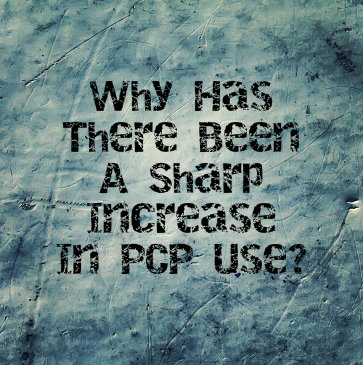 Its popularity had dropped significantly throughout the 80s and 90s until, according to SAMHSA, PCP-related emergency room visits rose 400 percent between 2005 and 2011, and actually doubled from 2009 to 2011, from 36,719 to 75,538.
Its popularity had dropped significantly throughout the 80s and 90s until, according to SAMHSA, PCP-related emergency room visits rose 400 percent between 2005 and 2011, and actually doubled from 2009 to 2011, from 36,719 to 75,538.
Dangerous Effects Of PCP
The hallucinogen is considered to be exceptionally dangerous because users can become extremely violent. Users report feeling detached from their surroundings, with dangerous side effects including seizures, irregular breathing and comas. PCP is also addictive and can result in high levels of anxiety and suicidal thoughts.
The most significant increase by age was demonstrated among adults aged 25 to 34, with a 518 percent increase from 3,643 visits to 14,175. In 2011 males comprised 69 percent of the 75,538 ER room visits and 45 percent of the visits were by adults between the ages of 25 to 34. PCP was combined with other drugs 72 percent of the time: with one other substance in 37 percent of ER visits, two other substances in 18 percent and 3 or more substances another 18 percent.
Public Education Needed On PCP’s Dangers
The study authors explained PCP’s resurgence using the term “generational forgetting,” meaning that what once was widely recognized as a dangerous drug is now resurging due to an uneducated public.
The authors recommend targeting 25- to 34-year-olds for education and prevention efforts, including tobacco and marijuana awareness due to the possibility of cigarettes and joints being laced with PCP.
The findings of SAMHSA reports are used by many groups: policymakers access the reports to ensure that adequate substance abuse treatment facilities serve their communities; law enforcement personnel can use the data to determine where their efforts need to be focused and learn which substances may be most dangerous in their area of service; the findings are also used in clinical settings to develop useful screening tools for patients in order to detect the use of other substances or the presence of additional mental health concerns.
There may also be a need for increased training efforts among emergency department personnel related to recognize the signs and symptoms of PCP use and the recommendations for treatment.
Read More About The Risks Of Meth And IV Drug Use
10 Dec 2013
Are Current Drug Policies Really Not Working?
A report out of the United Kingdom highlights the widespread distribution of illegal street drugs, with the researchers calling the war on drugs a failure. The experts say it’s time to address drug use through a public health approach rather than as a criminal justice initiative.
Illegal Drugs – Stronger, Cheaper And More Readily Available
The study from the International Centre for Science in Drug Policy, which examined decades of drug surveillance data involving the trafficking of marijuana, cocaine and opiates like heroin, showed that illegal drugs are cheaper, purer and more available than ever.
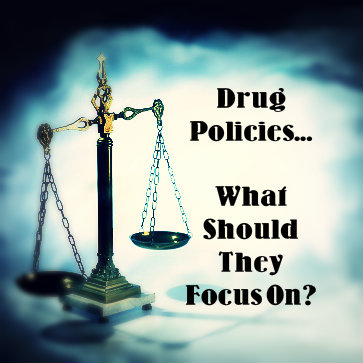 The findings highlighted the decrease of drug prices between 1990 and 2010, while purity and potency increased. In Europe the price of opiates and cocaine decreased by 74 percent and 51 percent during that time period.
The findings highlighted the decrease of drug prices between 1990 and 2010, while purity and potency increased. In Europe the price of opiates and cocaine decreased by 74 percent and 51 percent during that time period.
In addition, seizures of drugs increased during the study period. In most locations that were monitored the amount of cocaine, cannabis and heroin confiscated by law enforcement increased substantially during the years examined.
Should The Focus On Curbing Drug Use Shift?
The authors of the report note that the findings should be taken as an indication that current strategies to curb drug distribution are failing. However, despite these concerns, the focus for national governments has been law enforcement. Other approaches, such as decriminalization and legal regulation, have not been broadly incorporated.
Co-author Dr. Evan Wood, scientific chairman of the Centre, explained that the focus should shift to drug use as a public health concern rather than a criminal charge. Wood also talked about the need for increased addiction treatment availability and other public health strategies.
Just days before the findings were released, a senior UK police officer offered his opinion that decriminalization would be more effective than the current approach.
How Decriminalization Of Drug Offenders May Be A Positive Thing
Mike Barton, Chief Constable of Durham Police, voiced his position that drug users needed treatment and care, not criminal justice. Barton also said that decriminalization would threaten the motivation of dealers by taking away their income and power.
Instead, prohibition funds the drug dealers, says Barton, who is calling for an open debate that acknowledges the problems that still exist in the fight to reduce drug use.
Recovery Treatment Or Criminal Charges?
While the overall global strategy is prohibition, there are some national governments incorporating different policies. In Portugal individuals caught possessing drugs can avoid criminal charges if they undergo treatment.
While a more public health-focused approach seems clear to some in the scientific community, public officials have been less enthusiastic. No political party in the UK supports a legal regulation approach when it comes to hard drugs, but some politicians support legalizing marijuana.
Many recognize the delicate balance between treating drug use as a criminal justice issue and providing support for the recovery of the user. The community must be protected from the influence of the drug market, but the individual must be supported in their recovery, too.
Read More About Drug Use In The News
Prescription painkiller abuse has grown large enough to gain the attention of pharmaceutical companies, doctors, addiction experts, and even the federal government. There are things which can be done to try and halt the abuse of prescription medications. However, those in the know say that when access to opioids is shut down, we can expect substance abusers to move on to heroin.
Made from a synthetic form of opium, opioids are heavy-duty pain relievers like Oxycodone (Percocet), Hydrocodone (Vicodin), OxyContin (a longer-lasting form of Oxycodone) and codeine. Hydrocodone and Oxycodone are usually mixed with aspirin or acetaminophen to produce longer-lasting pain relief.
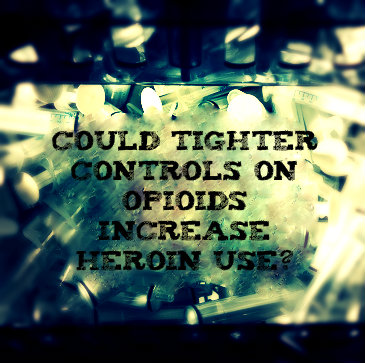 Opioids – Number One Prescribed Medication – Problem In The U.S.
Opioids – Number One Prescribed Medication – Problem In The U.S.
Opioids are the number one prescribed medication in the nation and are responsible for the vast majority of drug-related injuries and fatal overdoses, partly because people view them as safer than street drugs. Their wide availability means more drugs are in the hands of abusers.
Most opioid addicts started with a doctor’s prescription for a legitimate need. People who take more pills for a longer period than was prescribed can easily become addicted. Young people who use them recreationally can also quickly form a habit.
Thomas McClellan, the former Deputy Director for the White House Office of National Drug Control Policy, says if we can address these three issues the problem could be controlled:
3 Opioid Issues
- Over-Prescribing – Doctors want to control pain because it promotes healing and fosters a strong doctor-patient bond. Banning opioids outright will not work, but perhaps changing the standards of care which guide prescribing could.
- Insufficient Monitoring – Efforts are underway in most states to establish state-level monitoring programs. Under these programs every doctor who prescribes, patient who picks up and pharmacy that fills a controlled drug prescription will go on record. This should help reduce over-prescribing by doctors and keep patients from going from doctor to doctor in search of prescriptions.
- Patient Misuse – The Federal Drug Administration would like to see Hydrocodone reclassified to Schedule II so that it would have more oversight and be less accessible to patients. Under Schedule II constraints such as limiting automatic refills could help to reign in misuse.
How Tightly Controlling Opioids Could Increase Heroin Use
Would these measures stop painkiller abuse? Perhaps. But even if we succeed, experts predict that drug use will simply shift to another opiate: heroin.
Opioids are synthetic opiates (forms of opium) while heroin is a non-synthetic form. In other words, the drugs are somewhat related and produce similar results. Heroin costs about one half as much as synthetic opioids. So if opioids become more expensive and harder to get, experts predict that users will just switch to heroin.
Communities need to be ready for the shift that will most likely happen as a result of opioid crackdowns. The next question will be how to handle the heroin crisis.
If you or a love one needs help finding a drug rehab facility contact an Elements Recovery Advisor now! 855-763-6488
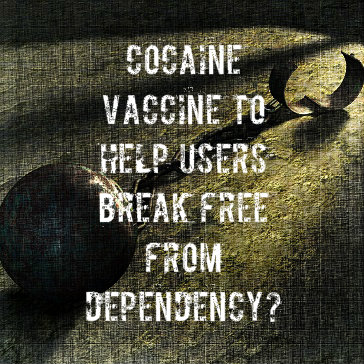 More than 22 million people in the United States are dealing with drug abuse, and the yearly healthcare dollars spent fighting this problem amount to more than 180 million. Cocaine abuse is one of the largest and most expensive problems under the larger umbrella of drug abuse, resulting in the most emergency room visits of any illicit drug.
More than 22 million people in the United States are dealing with drug abuse, and the yearly healthcare dollars spent fighting this problem amount to more than 180 million. Cocaine abuse is one of the largest and most expensive problems under the larger umbrella of drug abuse, resulting in the most emergency room visits of any illicit drug.
Unlike heroin addiction, which can often be treated successfully with a substitute drug called methadone, cocaine addiction has no such handy substitute available. But a small group of scientists have been working on another potential weapon for fighting cocaine abuse: a cocaine vaccine.
The idea for a drug abuse vaccine has been around for more than a quarter of a century. Currently, there are two major research teams actively engaged in developing a vaccine for clinical trials. These research groups are led by Kim Janda, Ph.D, of the Scripps Research Institute, and Thomas Kosten, M.D, of the Baylor College of Medicine. In 2010, Kosten’s team ran the first ever late-stage cocaine vaccine trial, with their vaccine TA-CD.
The Vaccine Principle
Vaccines have been in existence for hundreds of years, perhaps even more than 1,000 years. They operate in a very simple way: introducing a tiny amount of a disease (often in weakened or killed form) or something chemically similar to a disease into a person’s bloodstream so that the immune system is able to identify the invader and create antibodies. Once the human immune system learns to create antibodies for a particular disease, it can do so quickly again if the disease reappears.
However, a drug like cocaine is different from a disease-causing microbe. Cocaine in the bloodstream is much smaller than a microbe, and essentially invisible to the human immune system. As a result, recent approaches to the creation of a cocaine vaccine have involved attaching the vaccine to a virus. This helps the immune system learn to identify the substance and to destroy it.
Success Of Cocaine Vaccine And Questions
Both Kosten’s vaccine, TA-CD, and Janda’s vaccine, known as GNE, have had some measure of success in clinical trials. Janda and his research partner, Ronald Crystal of Weill Cornell, reported that GNE showed an impressive ability to destroy cocaine in the bloodstreams of monkeys. Kosten found similarly effective results from his human trial of TA-CD.
However, questions remain as to whether simply destroying cocaine in a person’s bloodstream is really an effective way of fighting drug abuse. Unlike measles or smallpox, two diseases almost completely eradicated in the first world because of vaccines, drug addiction is not simply a physical illness. Drug abuse can have serious physical effects, but addiction is a brain disease.
In the late-stage trial by the Baylor team, the results showed that the destruction of cocaine in addicts’ bloodstreams did not eliminate or reduce cravings for the drug. In some cases, the addicts in the trial took many times their usual dose of cocaine in an attempt to achieve the high that they were craving. For some subjects, this desperate search for a high was financially disastrous.
Addiction Prevention vs. Addiction Treatment
The purpose of a true vaccine is the prevention, rather than the treatment, of a serious disease. Although a cocaine vaccine may eventually be a successful tool for treating cocaine addiction, it may be even more effective when used as other vaccines are used: to prevent the initial development of a disease.
For individuals who are not addicted to cocaine, a successful drug vaccine could prevent them from ever experiencing any of the physical effects of the drug, including the chemical high that creates an addictive feedback loop in the human brain’s reward centers. This would prevent people from developing a dependency on the drug and suffering from cravings.
However, with so many people in the United States suffering from cocaine addiction, treatment remains a high priority for the scientists working on a vaccine. While an effective vaccine may never be a silver bullet that cures cocaine addiction on its own, it does have great potential as part of a larger treatment program. For example, a vaccine could essentially ensure addicts’ sobriety by destroying any cocaine that enters the system, even if they relapse.
The 18th century British philosopher and statesman Edmund Burke once famously declared: “Those who don’t know history are destined to repeat it.” In the years since, Burke’s quote has been repeated often in slightly different forms by a variety of public figures, which is a testament to how much truth the sentiment behind it contains.
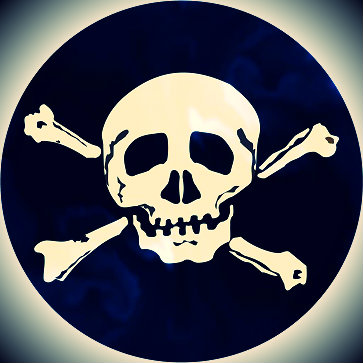 This statement could undoubtedly be applied quite aptly to the ongoing War on Drugs. Over the past several decades United States law enforcement agencies have spent over $1 trillion persecuting this war, and during that time hundreds of millions of tons of illegal drugs have been seized and destroyed here and around the world. And yet, much to the chagrin of those responsible for the continuation of this military-style anti-drug campaign, there is no evidence to suggest that any drug pipelines have been permanently closed off or that the flow of illegal substances has been reduced in any meaningful way as a result of this approach. In fact, the international drug trade appears to be more profitable and efficient than ever before.
This statement could undoubtedly be applied quite aptly to the ongoing War on Drugs. Over the past several decades United States law enforcement agencies have spent over $1 trillion persecuting this war, and during that time hundreds of millions of tons of illegal drugs have been seized and destroyed here and around the world. And yet, much to the chagrin of those responsible for the continuation of this military-style anti-drug campaign, there is no evidence to suggest that any drug pipelines have been permanently closed off or that the flow of illegal substances has been reduced in any meaningful way as a result of this approach. In fact, the international drug trade appears to be more profitable and efficient than ever before.
Effects Of Drugs On The Black Market
The Sept. 30 edition of the online medical journal BMJ Open includes a report from a multi-national team of researchers who studied and analyzed international drug surveillance databases in order to identify long-term trends in the illegal drug trade. They discovered that despite the stalwart anti-drug efforts of law enforcement, officers and administrators from across the globe, over the last 20 plus years the cocaine, heroin and marijuana available on the international black market has gotten both stronger and less expensive.
In the United States, from 1990 to 2007 the potency of these three substances rose by 60 percent, 11 percent and 160 percent respectively, and yet the street price of these three popular illegal drugs actually fell by 80 percent over the same time period when adjusted for inflation. The increased strength of such drugs is a testament to the fact that demand for illegal substances has remained high enough to spur constant innovation in production methods, while their steadily dropping price shows that supplies are bountiful and that users of cocaine, heroin or marijuana are still very much operating in a buyer’s market.
War On Drugs And Illegal Drug Use
Contrary to hype and popular opinion, the War on Drugs was never designed to stop the trade of illegal substances entirely. Instead, its goal has been to disrupt supply chains just enough to drive prices up and make dangerous intoxicants unaffordable to many who might be tempted to experiment with them. But even this modest goal has proven elusive, and few if any honest observers still believe that ramped up law enforcement strategies will ever reduce illegal drug consumption or prevent millions of users from plunging headfirst into the dark canyon of substance abuse and addiction.
At the present time, the global black market drug trade generates about $350 billion in tax-free profits annually. In the U.S. alone, there are approximately 22 million illegal drug users above the age of 12, and while the majority could not accurately be classified as addicts, those who do become dependent on substances like cocaine, heroin and methamphetamine usually have no difficulty in obtaining the supplies they need to quench their addictive thirsts. And with drugs becoming stronger and cheaper, we may start seeing greater percentages of casual drug aficionados eventually succumbing to addiction, since these individuals will be able to afford greater quantities of illegal substances even as the high they are getting from what they are using intensifies.
Drug Popularity, Reputation And Availability
It is true that the rates of usage of drugs such as cocaine, angel dust and heroin have generally been declining over the years. However, it would be a mistake to assume that the drug war has been successful just because certain drugs have now gone out of style. Once a drug starts to get a bad reputation, its use will usually decline. But as some drugs become less popular, other illegal substances will inevitably flood the market to fill the void, and, as a result, the whole cycle of casual use, abuse, addiction and disillusionment just keeps repeating itself with no apparent end in sight.
What Can Help Drug Addiction?
We can only speculate about what might finally make the merry-go-round of drug dependency stop spinning—expanded availability of treatment, more drug courts, innovative educational campaigns, greater social awareness, a reduction in the rates of poverty and unemployment, community outreach programs, or some combination of all of the above. It seems clear, however, that more interdiction, indictment and incarceration will not make the decisive difference.
The “Just Say No” campaigns were mocked in their day and seem hopelessly quaint now. Trying to shame people into avoiding drugs has not worked any better than treating drug use as a crime. But in the end, illegal drug use will only decline precipitously if enough people decide the risk of addiction is too great to flaunt. So in a sense, it really is about just saying no, and being able to recognize the critically important reasons it is logical to do so. Cheaper and stronger means extreme danger, and consequently a refusal to get involved with drugs in the first place is the smartest decision one can make.
Coroner Rules Cory Monteith’s Death Due to Heroin and Alcohol Use
According to the U.S. Department of Health & Human Services, heroin addiction is a chronic, relapsing brain disease. With intermittent abstinence, the body loses its resistance to the user’s drug of choice, which makes overdosing more of a probability. Some believe this might have been the case with Glee actor Cory Monteith.

Courtesy of: www.hdwallpapersinn.com
Canadian-born Monteith, 31, was found dead in a Vancouver hotel room in July alongside a hypodermic needle and spoon covered in drug residue and two empty bottles of champagne. He played the hunkish Finn Hudson on the show, a character with a heart of gold.
The coroner’s report found that Monteith succumbed to a mixture of alcohol and intravenous heroin use, with the death ruled accidental. He was alone at the time.
Young Celebrities Who Have Died From Drug Abuse
In recent years, a handful of actors have failed to live out their 30s because of addiction: River Phoenix collapsed outside a popular Hollywood nightclub in the early 1990s after overdosing on a combination of heroin and cocaine; Heath Ledger died a couple of years ago after succumbing to prescription drugs; Corey Haim, a 1980s child star who battled addiction since he was 15, died in 2010 after taking several forms of depressants and an anti-psychotic drug.
Monteith’s Early Drug Use
In Monteith’s case, he came out to the media with his drug problems, saying he began smoking marijuana at 13 and was abusing hard drugs by 16. He admitted to one publication that he felt lucky to be alive after some of the drug-fueled episodes he had gone through.
Every year more than 200,000 heroin addicts are imprisoned. So what can be done to help?
Naltrexone For Reversing Effects Of Heroin Overdose
Naltrexone is a drug that reverses the effects of a heroin overdose, but it’s been shown to be ineffective as an addiction treatment drug. Other drugs used as treatments are more addictive than the heroin addiction they’re supposed to be treating. At present there is no pharmaceutical cure-all for addiction.
Silver Lining – Cory Monteith’s Fan’s Learning Of Drug Abuse’s Dangers
Experts agree that if heroin addiction is perceived and treated as the chronic brain disease that it is, the stigma surrounding the issue will be lessened and more treatment avenues will be established. While Monteith’s case is tragic, it’s possible that his young fans may have learned about the dangers of drug abuse instead of following down his path.



